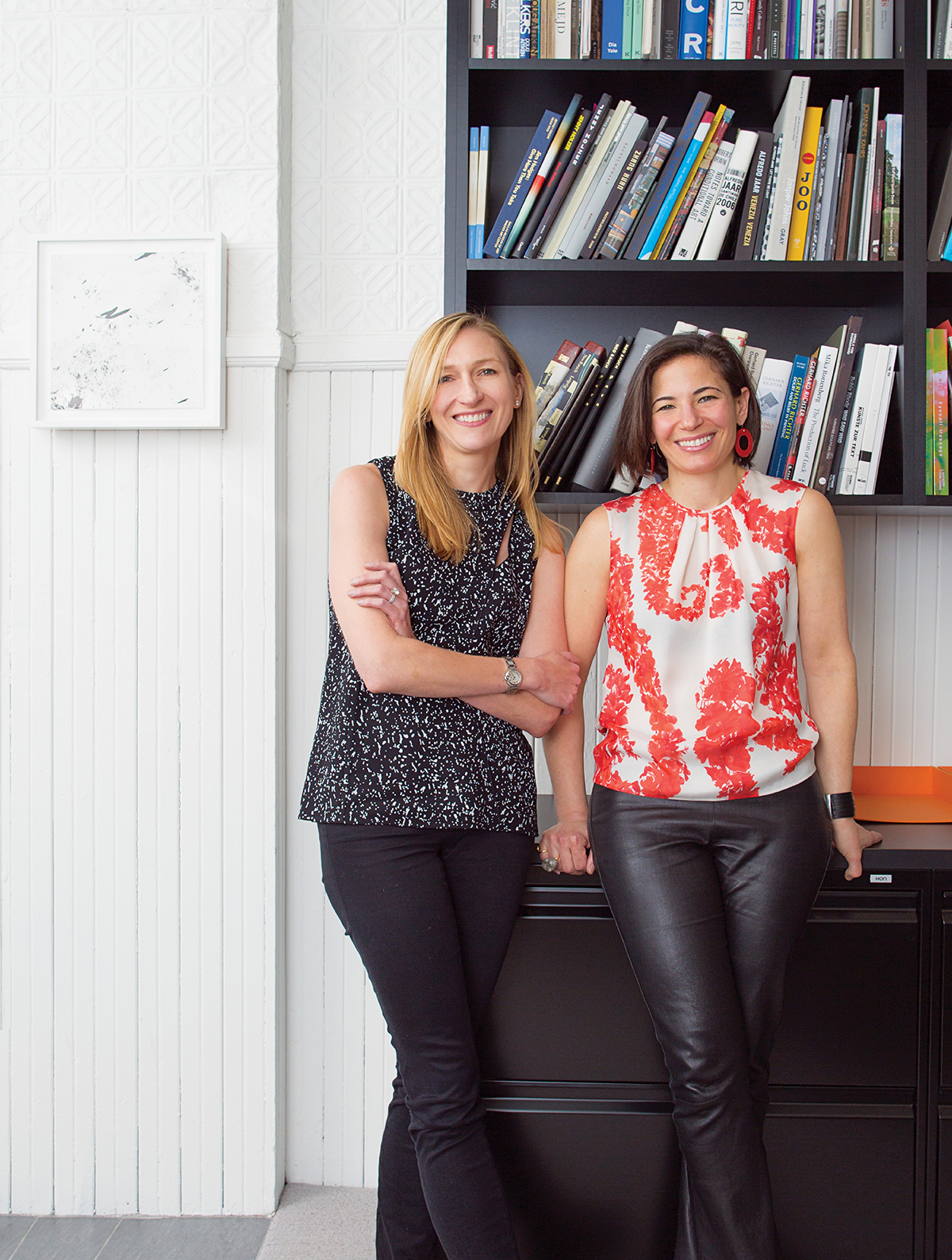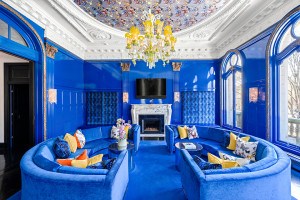Artistic Alliances

Maria Taft and Abigail Goodman, respectively, keep their Cambridge office brimming with books and chic accessories. (photograph by matt kalinowski)
Art experts Maria Taft and Abigail Goodman have spent much of their lives honing their curatorial skills. After the pair met as students at Phillips Academy in Andover in 1991, they remained friends while pursuing their separate interests: Goodman took over the Judi Rotenberg Gallery in Boston, while Taft lived in London, the Middle East, Singapore, and Greece, spearheading strategy and development for several global firms. In 2010, they came together to found their art advisory firm, Goodman Taft. Now they scour the globe in search of sculpture, paintings, drawings, and photography to help their clients build one-of-a-kind home art collections. We caught up with them in their sunny Cambridge office to talk about the nuanced art of curation.
Tell us a little about what an art advisory does.
AG: For us, it’s a multidisciplinary practice, and often a long-term endeavor. We work with all kinds of clients—private families, institutions, and corporations—to develop collections, exhibitions, publications, and other kinds of art in public form. For example, we recently published a two-volume catalog for Rollins College in Florida by working with folks there to curate and document the art in great detail.
MT: And unlike many consultants, we work with clients over a period of years, rather than weeks or months.
Do you have a typical client?
AG: The core of our business is made of people who are building collections—those who have an existing or nascent interest in art and would like to delve into the subject. Our clients tend to want the artwork in their homes to serve not only as a fingerprint, but also to reflect a larger cultural framework—maybe it’s historical, or maybe it’s about emerging artists. Whatever it is, they care about the long-term, historical perspective of the collection.
How do you determine what kind of aesthetic they’re looking for?
MT: At first, we hold a number of in-person meetings to learn about what they’ve collected so far, if anything. Some people are just starting out, while others have been collecting for some time. Then we spend a lot of time with them flipping through books and visiting museums, galleries, and art shows. The goal is to see as much as possible together. That way we can generate a shared vision about the artwork and figure out what really resonates with [the client] on a deep and long-term basis.
AG: Ultimately, we want to find work that reflects our clients’ personalities.
What happens when you’ve established a shared vision?
MT: Once we have a collection strategy, then it’s about finding specific works that fit within it. That could mean casting a wide net, or visiting studio artists and commissioning pieces. All of this allows the collector to be deeply invested in the artists and the works they’re acquiring.
AG: We’re not curating so much as helping our clients curate their own collections. Sure, we help educate them and establish a framework on which to evaluate choices, but our process also can be very organic, driven by the client’s desires. Some people want to see a huge variety of options and others are more specific and say, “Please help us find photos from the Civil Rights movement.” So it really varies from project to project.
Where’s the farthest you’ve traveled for a client?
MT: I went to Istanbul not too long ago, and we’re going to Switzerland next week. We generally hit up major art fairs in Switzerland, London, New York, Paris, and L.A.
AG: We’re planning a trip for one client to visit Latin America next year to see a wide range of art in a number of cities. There’s probably nowhere we wouldn’t go to look at art.
Tell us about some of your favorite artists.
MT: I tend more toward artists who work within photography. Many contemporary artists, even those who are not considered photographers, are starting to use photography in their work, which is great. I have always loved the work of Trevor Paglen.
AG: Abstract artist Charline von Heyl, German painter/sculptor Thomas Scheibitz, and painter Lynette Yiadom-Boakye. [The latter] takes on a history of portraiture in a beautiful, expressive gesture and is able to render a sense of her viewers’ interior via their exterior, much in a way that Alice Neel did historically.
And what emerging artists should we keep an eye on?
MT: We don’t have a crystal ball, but we’re drawn to artists who have a distinctive voice and point of view. There is so much out there; it’s refreshing to see artists come up with their own style and vocabulary and create interesting work that builds and grows over time. Some artists we’re focused on include Agnieszka Kurant, Matt Saunders, and Erin Shirreff—who’s about to have a show at the ICA this fall.
What’s your advice for someone who’s thinking about starting a collection?
AG: Sometimes people get intimidated by the word “collector.” They think, “Oh that’s not me.” But the reality is that anyone who’s curious about a subject and is going to spend time and resources on something will want more knowledge. It’s less about getting a “Collection”— capital C—but rather engaging with objects in a personal way and developing confidence.


